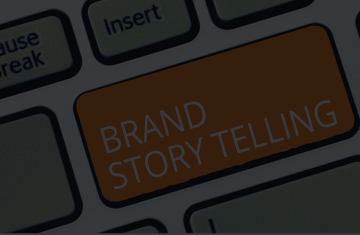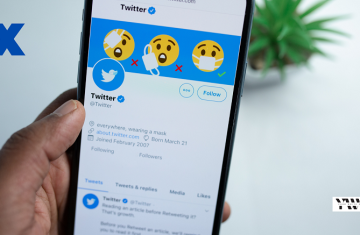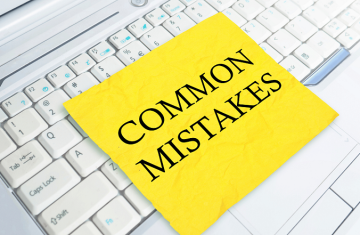Table of Contents
Storytelling in marketing is about more than just having a great product or competitive pricing. It’s about creating a connection, striking a chord deep within the consumer’s mind. It takes creativity, authenticity, and a deep understanding of your audience.
In this blog post, we’ll look into the top 10 brands that have mastered the art of storytelling. These brands have crafted storytelling narratives that not only highlight their products but also reflect their values, missions, and who they truly are.
Brands That Have Mastered Storytelling in Marketing
1. Nike
Few brands have harnessed the power of storytelling as effectively as Nike. Their iconic “Just Do It” slogan, introduced in 1988, is more than just a tagline; it’s a rallying cry that has transcended sports and become a cultural touchstone. But the true genius of Nike’s storytelling lies in their ability to craft narratives that resonate on a deeply personal level.
The “Just Do It” Legacy: More Than a Slogan

At its core, “Just Do It” is a mantra of empowerment. It speaks to the innate human desire to push boundaries, overcome obstacles, and achieve the impossible. Nike didn’t invent this desire; they simply tapped into it and gave it a voice.
The campaign’s initial commercials featured a diverse range of athletes – from seasoned pros to everyday fitness enthusiasts – each embodying the “Just Do It” spirit in their own unique way. This inclusivity broadened Nike’s appeal, making their message relevant to a wider audience.
The Kaepernick Effect: Controversy as a Catalyst
The Kaepernick campaign ignited a cultural firestorm, generating countless headlines and social media discussions. While some criticized Nike for politicizing sports, others applauded their courage and willingness to support a controversial figure.
Regardless of one’s stance on the issue, there’s no denying the campaign’s impact. It not only generated massive media attention but also drove a significant increase in sales and brand awareness. In the weeks following the campaign’s launch, Nike’s online sales surged by 31%, and their stock price reached an all-time high.
Nike’s decision to embrace controversy and align themselves with a social cause paid off handsomely. It reinforced their image as a brand that stands for something more than just profits. It also demonstrated the power of storytelling to spark conversation, ignite passion, and ultimately drive business growth.
2. AirBnB – “Belong Anywhere.”
At the heart of Airbnb’s storytelling lies the “Belong Anywhere” campaign. Launched in 2014, this campaign aimed to redefine travel not as a mere escape but as a transformative experience that fosters connection and belonging.

One of the most remarkable aspects of the “Belong Anywhere” campaign is its reliance on user-generated stories. Airbnb recognized that the most powerful stories come from the people who use their platform. They encouraged hosts and guests to share their unique experiences, creating a vast library of authentic narratives that showcase the diverse and transformative nature of travel.
These stories aren’t just marketing fodder; they’re the lifeblood of the Airbnb community. They inspire others to travel, connect with new people, and embrace different cultures. By giving a platform to these stories, Airbnb has not only created a sense of belonging but also empowered its users to become brand ambassadors.
3. Apple – “Think Different.”
Apple has cultivated a brand identity deeply rooted in narrative, a story that resonates with millions worldwide. In 1997, Apple launched its iconic “Think Different” campaign, a series of advertisements featuring black-and-white portraits of visionaries, rebels, and iconoclasts like Albert Einstein, Martin Luther King Jr., and Mahatma Gandhi. The campaign’s message was clear: Apple was not just a computer company, it was a brand for those who dared to challenge the status quo and think outside the box.

This philosophy of celebrating individuality and innovation became ingrained in Apple’s DNA. It resonated with consumers who saw themselves as non-conformists, creative thinkers, and change-makers. This wasn’t just about selling computers; it was about selling a lifestyle, a mindset.
The Underdog Narrative
Despite its immense success, Apple has always maintained an underdog narrative. The company’s story is one of overcoming challenges, defying expectations, and disrupting established industries. This narrative has been particularly evident in Apple’s rivalry with Microsoft, which dominated the personal computer market in the 1990s.
Apple’s marketing campaigns often positioned the company as the scrappy underdog taking on the corporate giant. This resonated with consumers who were tired of the status quo and longed for a more innovative and user-friendly alternative.
4. Dove – “Real Beauty” Campaign

In 2004, Dove launched its groundbreaking “Real Beauty” campaign, a bold departure from the airbrushed perfection that dominated the beauty industry. The campaign sought to challenge the narrow definition of beauty that had been perpetuated for decades, promoting instead a message of self-acceptance and inclusivity.
Challenging Traditional Beauty Standards
At the heart of the “Real Beauty” campaign was a simple yet powerful message: beauty comes in all shapes, sizes, ages, and ethnicities. Dove’s advertisements featured real women, not models, with diverse body types and backgrounds. These women shared their personal stories, struggles, and triumphs, creating a sense of relatability and authenticity that resonated deeply with consumers.
The campaign’s message wasn’t just about selling soap; it was about sparking a conversation about beauty standards and empowering women to embrace their individuality. Dove challenged the notion that beauty was synonymous with youth and thinness, promoting instead a more holistic view of beauty that encompassed confidence, self-love, and acceptance.
5. Patagonia
Patagonia is not just a brand; it’s a movement. From its inception, the company has been driven by a deep-rooted passion for the environment. Its founder, Yvon Chouinard, is a renowned climber and environmentalist, and this ethos is embedded in every aspect of the brand, from its product design to its marketing campaigns.
Environmental Activism: The Heart of Patagonia’s Storytelling
Patagonia’s stories are not just about selling jackets or backpacks; they’re about protecting the planet. The brand’s marketing campaigns often highlight environmental issues like climate change, pollution, and habitat destruction. They feature breathtaking visuals of pristine landscapes and showcase the stories of activists and athletes who are fighting to preserve these wild places.
One of Patagonia’s most iconic campaigns, “Don’t Buy This Jacket,” took a radical stance against consumerism.

The ad featured a full-page spread in The New York Times on Black Friday, urging consumers to consider the environmental impact of their purchases. This bold move not only generated widespread media attention but also solidified Patagonia’s reputation as a brand that puts principles before profits.
Transparency: Building Trust Through Openness
Patagonia’s commitment to transparency is another key aspect of its storytelling strategy. The company openly shares information about its supply chain, manufacturing processes, and environmental impact. It even publishes a “Footprint Chronicles” that details the environmental and social cost of each product it makes.
This level of transparency is rare in the corporate world, and it has earned Patagonia the trust and respect of consumers who value ethical and sustainable practices.
6. Warby Parker
Warby Parker burst onto the scene in 2010 with a mission to challenge the status quo. At the time, the eyewear market was dominated by a few major players, resulting in high prices and limited options for consumers. Warby Parker saw an opportunity to disrupt this model by offering stylish, affordable glasses online.
But their disruption went beyond pricing. Warby Parker’s story is one of innovation and a commitment to doing things differently. They pioneered the “Home Try-On” program, allowing customers to try on five frames at home for free before making a purchase. This innovative approach not only addressed a common pain point for eyewear shoppers but also became a key part of the brand’s story.
Buy a Pair, Give a Pair: A Social Mission at the Core

Warby Parker’s commitment to social good is deeply embedded in their narrative. Their “Buy a Pair, Give a Pair” program, which donates a pair of glasses to someone in need for every pair purchased, is more than just a charitable initiative; it’s a core part of their brand identity.
This program isn’t just about giving back; it’s about empowering others. Warby Parker partners with non-profit organizations to distribute glasses to people in developing countries, where access to vision care is often limited. This social mission not only resonates with consumers who want to support brands that make a difference but also adds a layer of meaning to their purchases.
7. Old Spice
Old Spice, a brand with a long history rooted in traditional masculinity, was facing a decline in relevance. Its target audience was aging, and younger consumers saw it as their dad’s (or even their grandfather’s) deodorant. But in 2010, everything changed.
The “Man Your Man Could Smell Like” Campaign

Enter Isaiah Mustafa, a former NFL player turned actor, who became the face of Old Spice’s groundbreaking “The Man Your Man Could Smell Like” campaign. The ad, with its rapid-fire delivery, absurd scenarios, and over-the-top masculinity, was unlike anything seen before. It quickly went viral, racking up millions of views and sparking countless parodies and imitations.
The campaign’s success wasn’t just due to its humor; it was the unexpectedness of it all. Old Spice, a brand known for its serious, straightforward approach, suddenly embraced absurdity and self-awareness. This unexpected twist not only made the ads hilarious but also made them shareable, generating massive buzz and brand awareness.
Targeting a New Audience: Expanding the Appeal
Old Spice didn’t just make people laugh; they also made themselves relevant to a new generation of consumers. The campaign’s humor resonated with younger audiences who appreciated its irreverence and self-deprecating tone. Old Spice managed to shed its image as an outdated brand and position itself as a fun, modern, and relatable choice for men of all ages.
8. Coca-Cola
Coca-Cola’s journey in storytelling began over a century ago, with its iconic red and white logo and the simple message of refreshment. Over the years, the brand has evolved its storytelling strategy, adapting to changing times and cultural landscapes while remaining true to its core values of happiness and togetherness.
Happiness and Togetherness: The Emotional Core
At the heart of Coca-Cola’s storytelling lies a deep understanding of human emotions. The brand recognizes that happiness is a universal language, and its stories consistently tap into this shared desire for joy, connection, and belonging. Whether it’s a heartwarming commercial depicting a family gathering or a playful advertisement showcasing friends enjoying a Coke, the brand’s narratives evoke positive emotions that resonate with people on a personal level.
Share a Coke

In 2011, Coca-Cola launched the “Share a Coke” campaign, a global initiative that personalized the iconic Coca-Cola bottles and cans with popular names. This simple yet brilliant idea transformed the product into a personalized gift, a conversation starter, and a symbol of connection. The campaign went viral, with people sharing photos of their personalized bottles on social media, creating a sense of community and shared excitement around the brand.
Beyond the personalization aspect, the “Share a Coke” campaign tapped into a deeper human need for connection. It encouraged people to reach out to friends, family, and even strangers, sparking conversations and creating shared experiences. This campaign is a prime example of how storytelling can transcend mere product promotion and become a catalyst for social interaction.
Holiday Storytelling
Coca-Cola’s Christmas campaigns have become iconic and synonymous with the holiday season. From the heartwarming “Holidays Are Coming” commercial featuring the Coca-Cola Christmas truck to the nostalgic imagery of Santa Claus enjoying a Coke, the brand’s holiday storytelling has become deeply ingrained in popular culture.
What makes Coca-Cola’s Christmas campaigns so effective is their ability to tap into the emotions and traditions associated with the holiday season. They evoke feelings of joy, nostalgia, and family togetherness, creating a sense of shared experience that transcends generations. This emotional connection has made Coca-Cola an integral part of holiday celebrations around the world.
9. GoPro
GoPro’s marketing strategy is built upon a simple yet powerful premise: everyone has a story to tell. They understand that the most compelling stories aren’t always the ones crafted by professional marketers; they’re the raw, authentic narratives of real people living their lives, pursuing their passions, and overcoming challenges.

GoPro’s cameras are designed to be more than just tools for capturing footage; they’re catalysts for storytelling. By providing high-quality, durable, and user-friendly cameras, GoPro empowers people to document their adventures, express their creativity, and share their unique perspectives with the world.
User-Generated Content: The Heart of GoPro’s Marketing
GoPro’s marketing campaigns heavily rely on user-generated content (UGC). They actively encourage their customers to share their videos and photos on social media, using the hashtag #GoPro. This has created a vast library of breathtaking, inspiring, and often heartwarming stories that showcase the versatility and potential of GoPro cameras.
But GoPro doesn’t just passively collect UGC; they curate and amplify it. They feature the best user-generated content on their own social media channels, website, and advertising campaigns. This not only provides a constant stream of fresh, engaging content but also reinforces the idea that GoPro is a brand for everyone, regardless of skill level or experience.
10. Google – “Year in Search.”

One of Google’s most compelling storytelling initiatives is the “Year in Search” campaign. Launched annually, this campaign reflects on the most significant events, trends, and moments that captured the world’s attention throughout the year. But it’s not just a dry recap of statistics; it’s a carefully curated collection of stories that showcase the human experiences behind the search data.
Emotional Storytelling
Google’s “Year in Search” videos often feature real people whose lives were touched by the events of the year. Whether it’s a survivor of a natural disaster, an activist fighting for social justice, or an everyday hero who made a difference in their community, Google’s stories celebrate the resilience, courage, and compassion of the human spirit.
By focusing on emotional storytelling, Google taps into our shared humanity. We see ourselves reflected in the stories of others, and we’re reminded of the common threads that connect us all. This emotional connection fosters a sense of community and belonging, solidifying Google’s position not just as a search engine but as a platform that empowers people to connect with information and with each other.
Technology as a Force for Good
Google’s storytelling often showcases how technology can be a force for good in the world. Whether it’s highlighting innovative solutions to global challenges, celebrating the achievements of scientists and researchers, or showcasing how technology is empowering individuals and communities, Google’s stories paint a picture of a brighter future where technology plays a vital role in solving problems and improving lives.
For instance, one “Year in Search” video highlighted how Google’s technology helped reunite families separated by war and natural disasters. Another video showcased how Google’s machine learning algorithms were being used to diagnose diseases and develop new treatments. These stories not only demonstrate the practical applications of Google’s technology but also inspire a sense of hope and optimism about the future.
You May Also Like:
- How to Measure the Impact of Storytelling in Marketing
- How to Use Storytelling in Marketing to Close Sales
Conclusion
These ten brands, despite their differences in industry and approach, all understand one crucial thing: storytelling isn’t just a marketing tactic—it’s a powerful way to connect with people on a deeper level. They’ve used storytelling to build communities, spark conversations, and drive meaningful action.
Consumers crave genuine connections with brands. That’s why authentic stories, even those that show imperfections, are the ones that build trust and loyalty.
PS: Want to start attracting your desired leads through storytelling that connects and converts? Here’s my free storytelling workbook to get you started.
Need professional help creating relatable marketing stories that drive sales? I’m “your write choice.” Contact me now!










